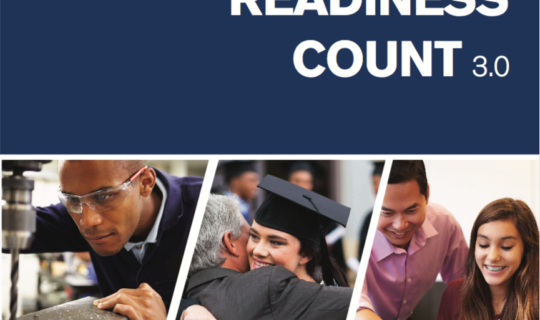Resource: The State of Career Technical Education
Improving Data Quality and Access
States have recently made significant strides to provide all students with high-quality pathways that start in high school and lead to a postsecondary credential with labor market value. And yet, according to a new report by Advance CTE, in collaboration with Education Strategy Group, Data Quality Campaign, Workforce Data Quality Campaign, and Council of Chief State School officers, data systems to monitor student outcomes and ensure alignment with changing economic demands remain significantly underdeveloped and underutilized.
The State of CTE: Improving Data Quality and Effectiveness found that less than half of State CTE Directors have enough confidence in their current data systems to give them the information they need to make meaningful programmatic and policy decisions about secondary and postsecondary CTE. However, nearly 90 percent of State Directors say that improving their state CTE data system is a top priority moving forward
Major findings from the report include:
- States are hesitant to use their data for high-stakes decision making: States often use CTE and career readiness data for low-stakes decisions such as informing technical assistance, but are less likely to use their data to influence funding and decisions to transform or phase out CTE programs.
- CTE data systems are not sufficiently aligned across the secondary, postsecondary and workforce sectors: According to the survey, 49 percent of State Directors say their CTE data system is “mostly” or “fully” aligned with secondary data systems, which drops to 28 percent with postsecondary data systems and just 18 percent with workforce data systems.
- Many states rely on self-reported measures of career readiness and do not often use rigorous validation processes: At the secondary level, 61 percent of states use student surveys, which have notoriously low response rates and are difficult to validate, to identify whether secondary learners secure post-program employment. About a third of states report using student surveys to measure entry into the workforce or continued education and training for postsecondary program completers.
While these findings show that there is much work to be done to improve and align CTE data systems, the recently reauthorized Strengthening Career and Technical Education for the 21st Century Act (Perkins V) gives states an exciting opportunity to improve data quality and effectiveness.
Ultimately, data should be an asset in this work, and instead, it is the achilles heel. All states must build better linkages across sectors so that educators and policy makers can have actionable data to support students’ success.







